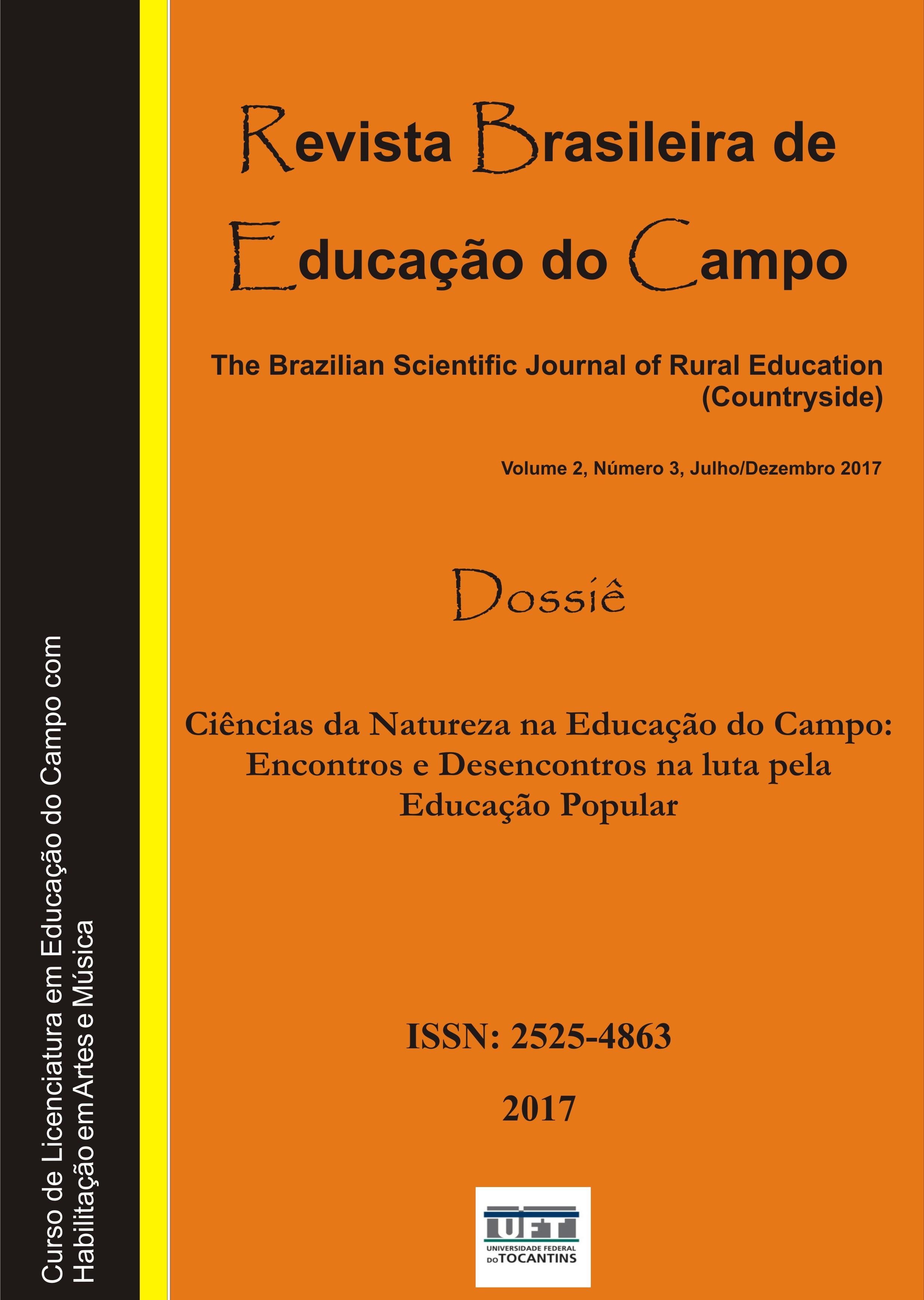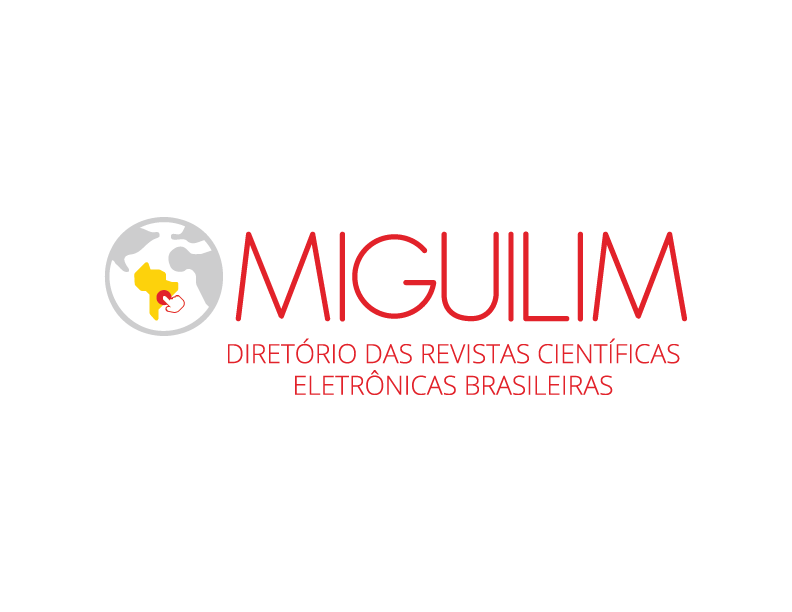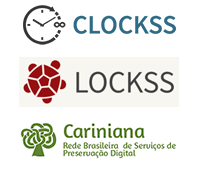Using digital educational objects to teach human body systems at a countryside school
DOI:
https://doi.org/10.20873/uft.2525-4863.2017v2n3p861Abstract
ABSTRACT. The purpose of this study is to assess the use of educational software and mobile device applications to teach about the human body at a rural school. It is an action research, with a qualitative approach, developed in 2016 and involving 14 students from the 8th year Elementary Education at the Escola Estadual Sol Nascente in Confresa-MT. The chosen software and application was the Human Body Atlas and 3D Human Body Systems, emphasizing on the digestive and circulation systems. The results from the pre-and post-test, which comprised 20 questions together, corroborate the hypothesis that the use of digital educational objects benefits the education process. Students learned better the systems in comparison with when only traditional resources, such as a didactic book, was used. Such advancement could be harnessed to the fact that the resources make use of 3D images and point out each part of the body, besides providing important information and curiosities about the subject. It is therefore expected that digital technologies may be increasingly inserted and explored in pedagogical practices, since those resources allow for studying and solving queries, by broadening educational space and time.
Downloads
Literaturhinweise
Auler, D. (2003). Alfabetização científico-tecnológica: um novo “paradigma”? Ensaio – Pesquisa em Educação em Ciências, 5(1), 68-83.
Bento, M. C. M., & Cavalcante, R. S. (2013). Tecnologias Móveis em Educação: o uso do celular na sala de aula. ECCOM, 7(4), 113-120.
Fonseca, A. G. M. F. (2014). A ascensão dos dispositivos móveis e seus usos no ensino-aprendizagem. 1º Encontro Internacional de Tecnologia, Comunicação e Ciência Cognitiva. Ano II - Agosto de 2014. Anais. São Paulo.
Freire, P., & Guimarães S. (2012). Educar com a mídia: novos diálogos sobre educação. Rio de Janeiro: Paz e Terra.
Gil, A. C. (2010). Como elaborar projetos de pesquisa/Antonio Carlos Gil. (5th ed). São Paulo: Atlas.
Lopes, M. I., Rehfeldt, M. J. H., Bersch, M. E., & Rosa, D. C. (2015). Tecnologia como potencializadora da inclusão no Ensino Superior. Caderno Pedagógico (Lajeado. Online), 12(1), 122-137.
Martins, G. A., & Theóphilo, C. R. (2007). Metodologia da Investigação Científica para Ciências Sociais Aplicadas. São Paulo: Atlas.
Moreira, M. A. (2011). Metodologias de pesquisa em ensino. São Paulo: Editora Livraria da Física.
Moura, A. (2009). Geração Móvel: um ambiente de aprendizagem suportado por tecnologias móveis para a Geração Polegar. In P. Dias, A. J. Osório (Org.). VI Conferência Internacional de TIC na Educação Challenges, 2009/Desafios 2009. Actas. Braga: Universidade do Minho. 50-78. Recuperado em 07 de novembro, 2016, de repositorium.sdum.uminho.pt/bitstream/1822/10056/1/Moura%20(2009)%20Challenges.pdf
Ruas, P. A. A. R. (2012). A utilização do Banco Internacional de Objetos Educacionais para a formação de professores de Física do Ensino Médio no município de Santo André. 2012. Dissertação (Mestrado em Ensino). Universidade Federal do ABC. Santo André. Recuperado em 28 de setembro, 2016, de biblioteca.ufabc.edu.br/index.php?codigo_sophia=47227
Saboia, J., Vargas, P. L., & Viva, M. A. A. (2013). O uso dos dispositivos móveis no processo de ensino e aprendizagem no meio virtual. Revista Cesuca Virtual: Conhecimento sem Fronteiras, 1(1), 1-13.
Santos, S. F., & Leão, M. F. (2016). Uso de softwares educacionais e aplicativos para dispositivos móveis: Ferramentas para ensinar Ciências Naturais em escolas do campo. In 1ª Mostra de Trabalhos dos Cursos de Especialização do IFMT Campus Confresa, 2016. Anais. Confresa-MT, 2016. Recuperado em 25 de janeiro, 2017, de mostradetrabalhosespecializacoes.blogspot.com.br/p/blog-page_15.html
Silva, J. C. T. (2002). Tecnologia: conceito e dimensões. XXII Encontro Nacional de Produção. Curitiba, 2002. Anais. Curitiba-PR, 2002. Recuperado em 16 de setembro, 2016, de www.abepro.org.br/biblioteca/enegep2002_tr80_0357.pdf
Sodré, M. (2012). Reinventando a Educação: Diversidade, descolonização e redes. Petrópolis: Editora Vozes.
Tarouco, L., Fabre, M. J. M., & Tamusiunas, F. R. (2003). Reusabilidade de objetos educacionais. Revista Novas Tecnologias na Educação, 1(1), 1-11.
Thiollent, M. (2009). Metodologia da pesquisa-ação. São Paulo: Editora Autores Associados.
Totti, A. R.; Gomes, C.; Souza, W. G.; Moreira, S. P. T. (2011). M-Learning: Possibilidades para a Educação a Distância. In: 17º Congresso Internacional ABED de Educação a Distância, 2011, Manaus. Anais. Manaus-AM, 2011. Recuperado em 18 de outubro, 2016, de www.abed.org..br/congresso2011/cd/181.pdf
Veröffentlicht
Zitationsvorschlag
Ausgabe
Rubrik
Lizenz
Creative Commons Attribution License
Creative Commons Attribution License
Proposal for Copyright Notice Creative Commons
1. Policy Proposal to Open Access Journals
Authors who publish with this journal agree to the following terms:
A. Authors retain copyright and grant the journal right of first publication with the work simultaneously licensed under the Creative Commons Attribution License that allows sharing the work with recognition of its initial publication in this journal.
B. Authors are able to take on additional contracts separately, non-exclusive distribution of the version of the paper published in this journal (ex .: publish in institutional repository or as a book), with an acknowledgment of its initial publication in this journal.
C. Authors are permitted and encouraged to post their work online (eg .: in institutional repositories or on their website) at any point before or during the editorial process, as it can lead to productive exchanges, as well as increase the impact and the citation of published work (See the Effect of Open Access).














